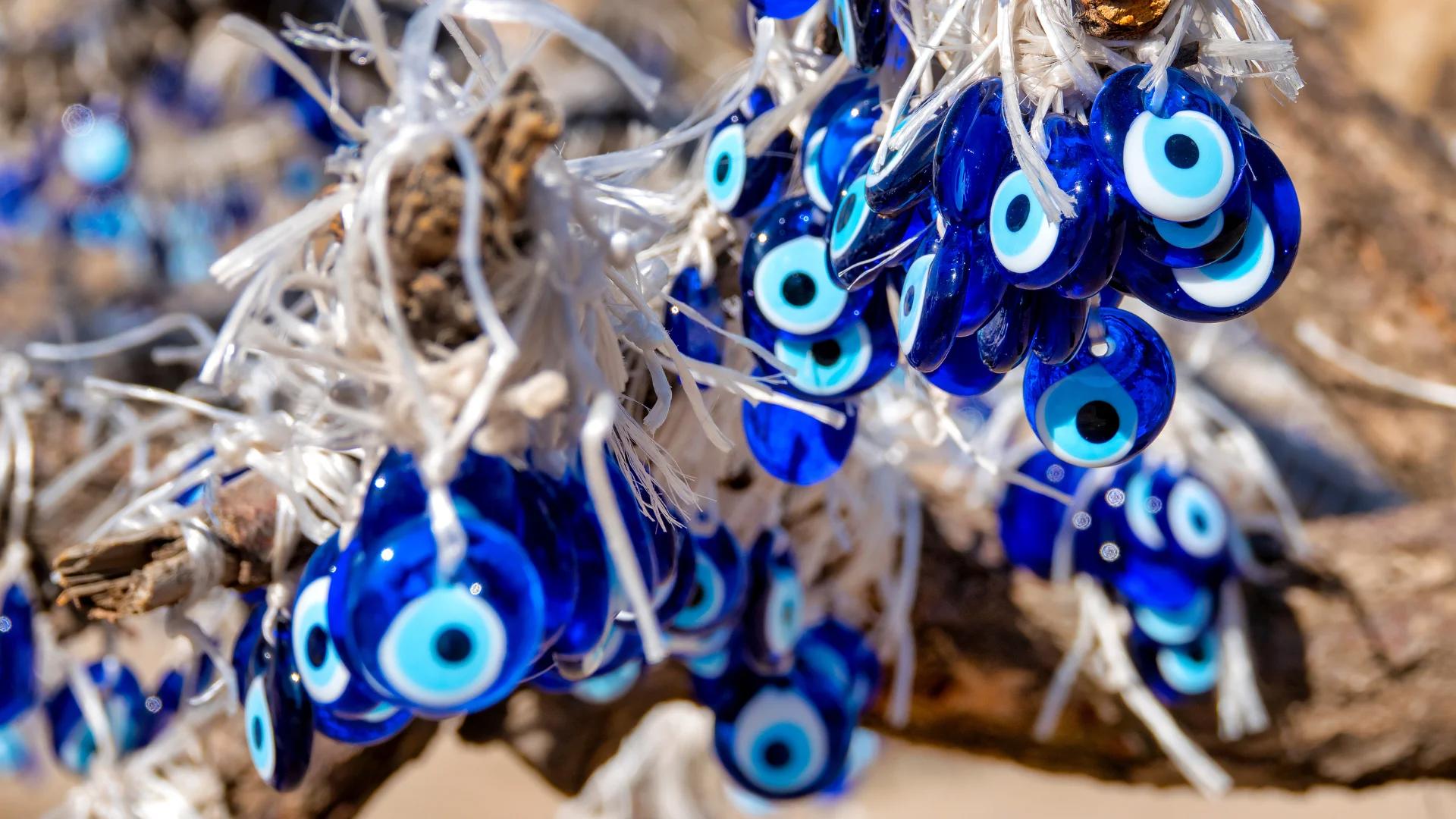
What Is The Meaning Of The Turkish Evil Eye?
If you have ever visited Turkey or seen Turkish souvenirs online, you have likely noticed that deep blue glass eye staring back at you. This is called nazar boncugu, or the Turkish evil eye. But what is the story behind it? Why do so many people wear it or hang it in their homes? Let’s explore the history of the Turkish evil eye and discover why it still matters today.
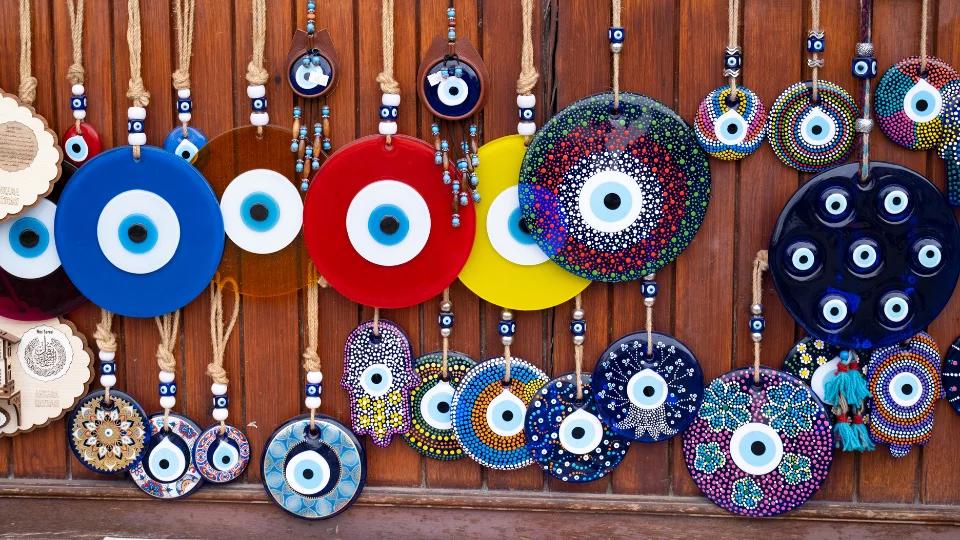
What Is The Evil Eye?
The belief in the “evil eye” is ancient and exists in many countries. People have long thought that a jealous or envious look can bring bad luck or illness. The negative energy from such a gaze is called the “evil eye.” To stop it, people started using amulets and charms. One of the most famous is the nazar boncugu, a blue bead that protects against harm.
The word nazar comes from Arabic and means “sight” or “look.” Over time, this belief spread through many cultures, including ancient Egypt, Greece, and Persia. In each place, people used different symbols to block bad energy. In Turkey, this symbol became the nazar boncugu, the blue eye bead made of glass.
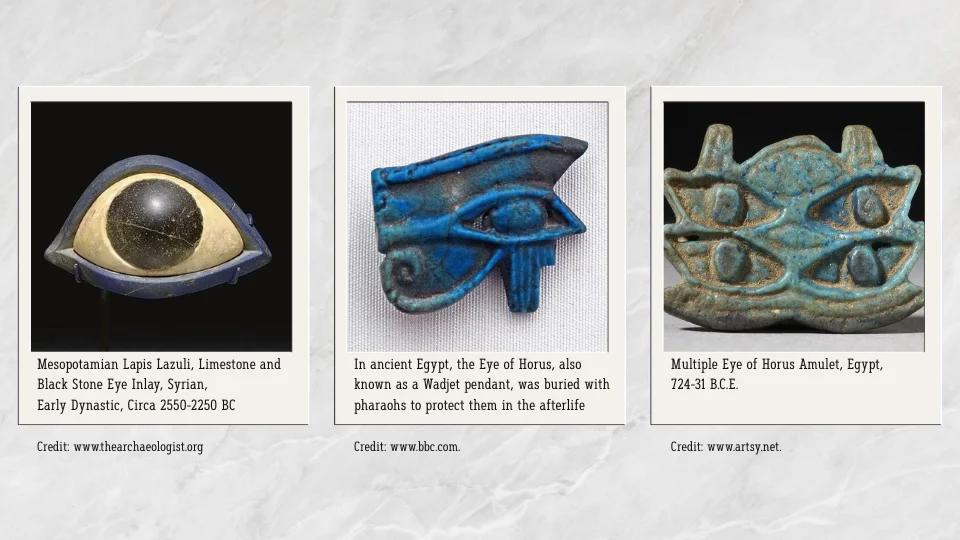
How Did It Begin?
Ancient Origins
The use of eye-shaped charms began thousands of years ago. Archaeologists found similar items in Mesopotamia, dating back over 5,000 years. These early beads were made of clay or stone. Later, with new glassmaking skills, people started crafting them from glass, which gave them a bright blue color.
Ottoman Period
The Turkish evil eye became popular during the Ottoman Empire. Skilled glassmakers in the Izmir and Anatolia regions began making nazar boncugu by hand. The deep blue color came from cobalt, believed to hold strong protective power. These artisans passed their craft through generations.
Over time, the charm became part of daily Turkish life. It was placed above doors, worn as jewelry, or given as a gift. People believed that if the bead cracked, it had absorbed bad energy and protected its owner.
During your Private Turkey Classics Tour, you can often see nazar charms hanging above traditional shops or in historical houses. Guides usually explain their meaning during visits to bazaars and artisan workshops.
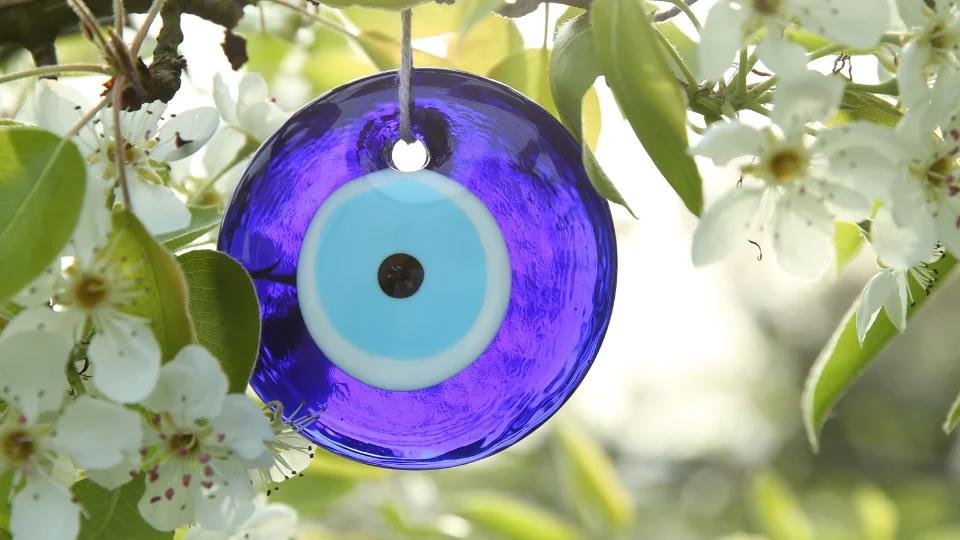
What Does It Symbolize?
Protection From Negativity
The Turkish evil eye is mainly for protection. It blocks jealousy, envy, and bad intentions. The charm “looks back” at the evil gaze and keeps the person safe. That is why many Turks place it at entrances, wear it as jewelry, or keep it in bags.
Color Meanings
Each color in the nazar boncugu design has a meaning:
- Dark blue: peace and safety
- Light blue: truth and energy
- White: purity and light
- Black or gold: strength and balance
Together, these shades protect from harm and bring calmness.
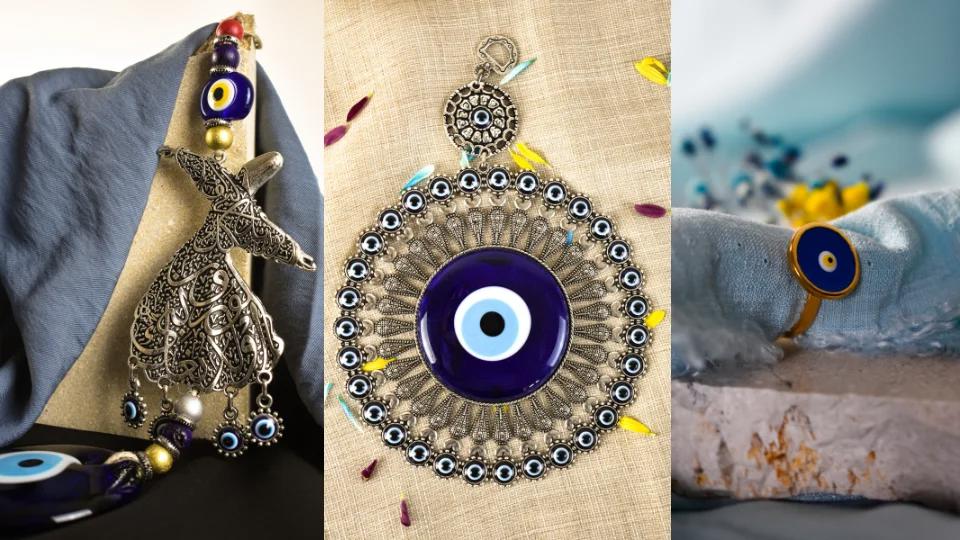
How Do Turks Use It?
- In Homes And Shops: In Turkish homes, a large nazar disc is placed near the front door to welcome positive energy. Shops and restaurants use it for the same reason — to guard against envy and bad luck.
- In Cars And Jewelry: Many people hang a small nazar boncugu in their car or wear it as a necklace, ring, or bracelet. The symbol has also become part of Turkish fashion.
- For Babies And Weddings: It is common to pin a tiny evil eye charm to a baby’s clothes or gift it to newlyweds and new homeowners. This simple act means care, protection, and good wishes.
When It Breaks?
If a nazar bead cracks, people see it as a good sign. It means it absorbed negative energy. Most Turks replace it quickly to continue the protection.
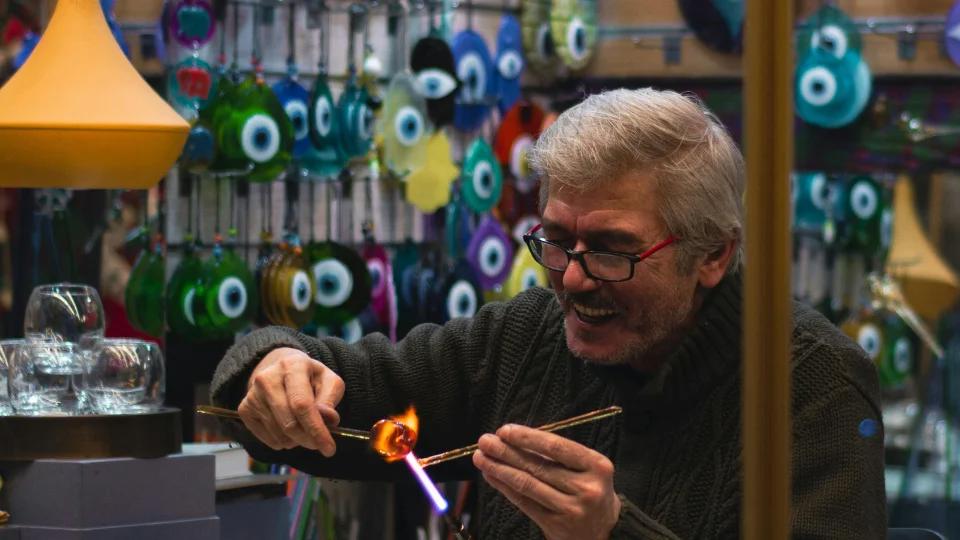
Where To Buy It?
The Turkish evil eye is sold all over Turkey, but quality matters. To find authentic handmade charms, visit:
- Grand Bazaar, Istanbul: hundreds of stalls with every size
- Spice Bazaar, Istanbul: ideal for jewelry and small gifts
- Glass workshops in Izmir and Anatolia: watch artisans make each bead
- Shops in Cappadocia or Antalya: beautiful modern versions
Choose glass, not plastic. Look for deep blue color and clear shape. Bargaining is part of the fun, so be polite when negotiating.
If you join our Private Shopping Tour: Grand Bazaar & Spice Market, you can find handmade nazar charms at local markets along the Bosphorus. They are perfect souvenirs full of tradition.
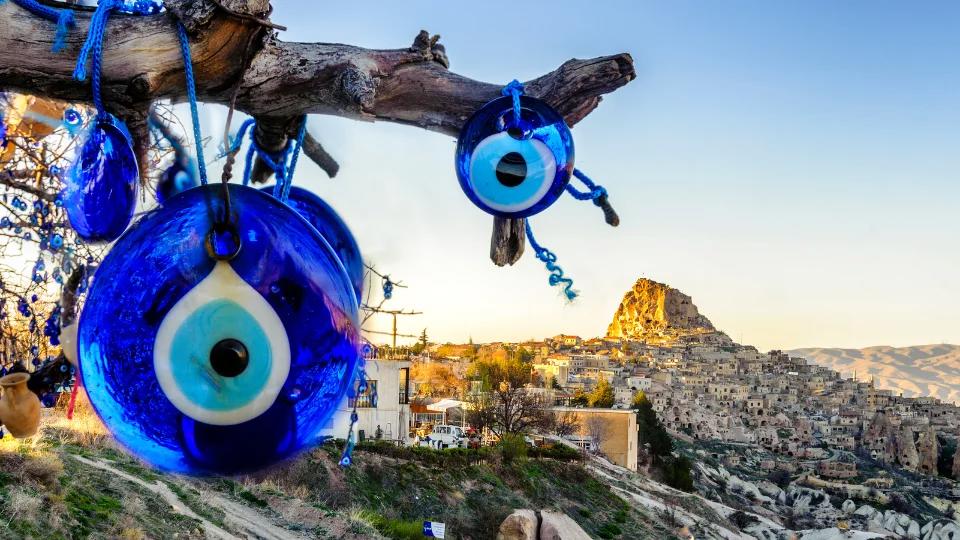
Why Does It Matter Today?
The Turkish evil eye is more than a charm. It shows protection, faith, and cultural pride. From ancient times to modern life, the nazar boncugu has protected people and shared the story of belief and hope.
To see this tradition up close, join one of our tours like Private Cappadocia Tour. In Cappadocia’s beautiful valleys, you can find trees covered with countless nazar boncugu charms. Locals and visitors hang them while making wishes, believing the blue eyes will bring luck and protect their dreams.
Discover the beauty and mystery of Turkish culture on your next visit. Contact us today to plan your unforgettable trip through Istanbul and beyond.